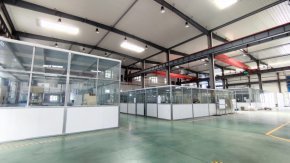12
2024-04
TZM block: The preferred material for building a solid foundation.
In the fields of architecture and civil engineering, TZM blocks (also known as zirconium-titanium-molybdenum alloy bricks) are widely recognized as high-performance materials. They are highly regarded for their excellent corrosion resistance, high strength, and good thermal stability. This article will delve into the characteristics, applications, and importance of TZM blocks in engineering, helping readers gain a more professional understanding of this material.

TZM blocks are composite materials made from an alloy of three metal elements: zirconium, titanium, and molybdenum. This material not only possesses the toughness and plasticity of metals but also has the high-temperature resistance characteristics of ceramics. TZM alloys can withstand extreme temperature variations, maintaining stable performance from low temperatures to high temperatures exceeding 1000 degrees Celsius. Therefore, they have a wide range of applications in industries such as aerospace, chemical engineering, and nuclear energy.
When selecting TZM blocks, it is important to consider their specific performance parameters, such as tensile strength, yield strength, and elongation. These parameters determine the application range of TZM blocks under different conditions. For example, in environments that require long-term resistance to high-temperature corrosion, choosing TZM alloys with a high molybdenum content would be more appropriate; whereas in situations that require higher mechanical strength, specially heat-treated TZM blocks may be needed.
One significant advantage of TZM blocks is their outstanding corrosion resistance. They can maintain stability in various corrosive media, including acids, bases, and salt solutions. This makes TZM alloys ideal materials for applications in chemical equipment and marine engineering structures. Additionally, TZM blocks also have good machinability and can be processed and shaped through various methods such as welding, forging, and casting.
In practical applications, TZM blocks also perform excellently. Whether used as structural materials for bridges and high-rise buildings in the construction industry or as functional materials for manufacturing aerospace components and chemical reactors, TZM blocks can provide reliable performance assurance. Their durability and reliability enable many engineering projects to operate stably over the long term, reducing maintenance costs and replacement frequency.
In summary, TZM blocks are engineering materials that hold significant importance across multiple industries. They combine the advantages of various metals and non-metals, meeting the demands of various extreme working conditions. With the development of materials science, we look forward to more innovations from TZM blocks in the future, providing more possibilities for the engineering field. For engineers and designers, understanding and selecting the appropriate TZM blocks will help them build safer, more economical, and efficient engineering projects.
TZM block



